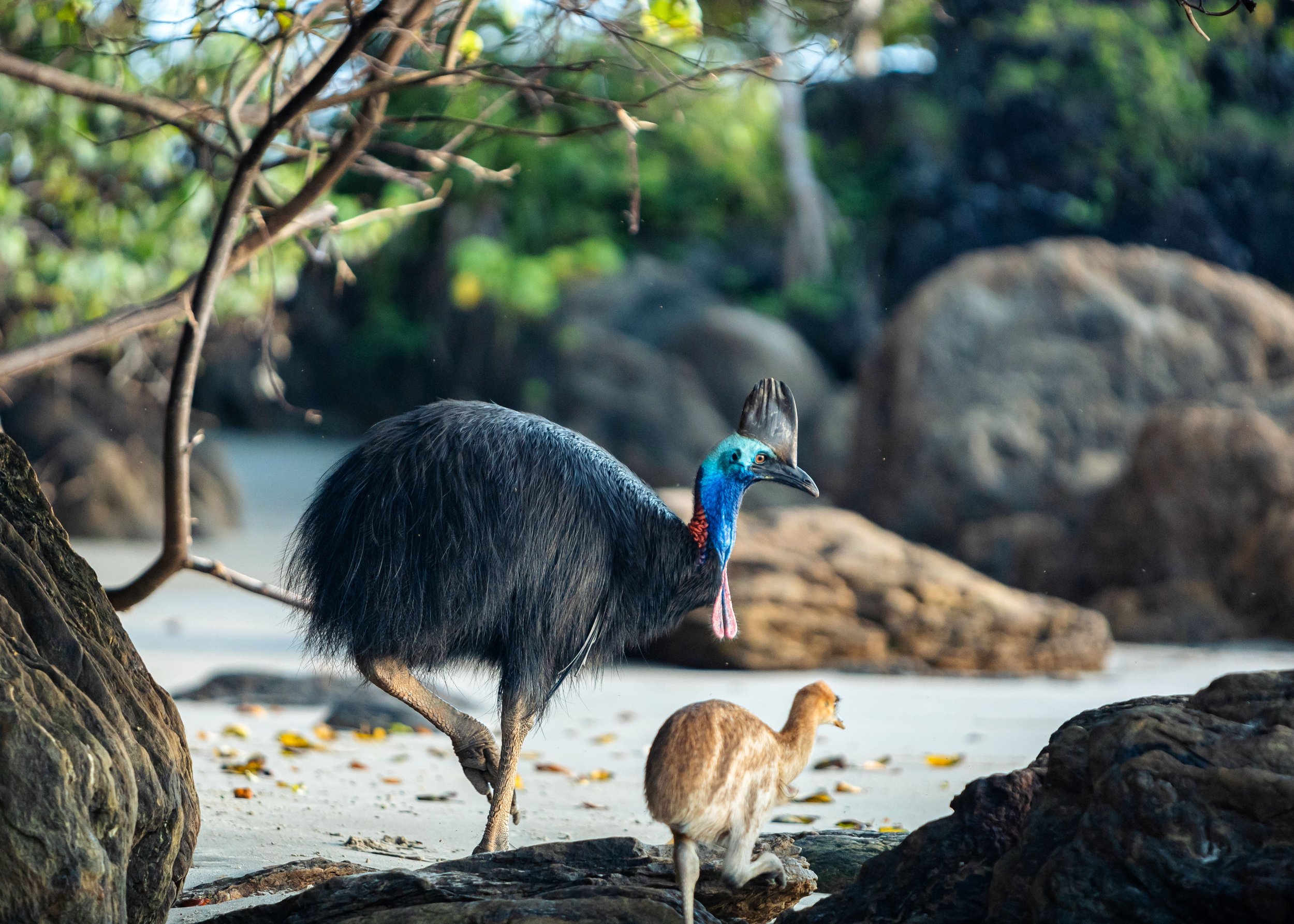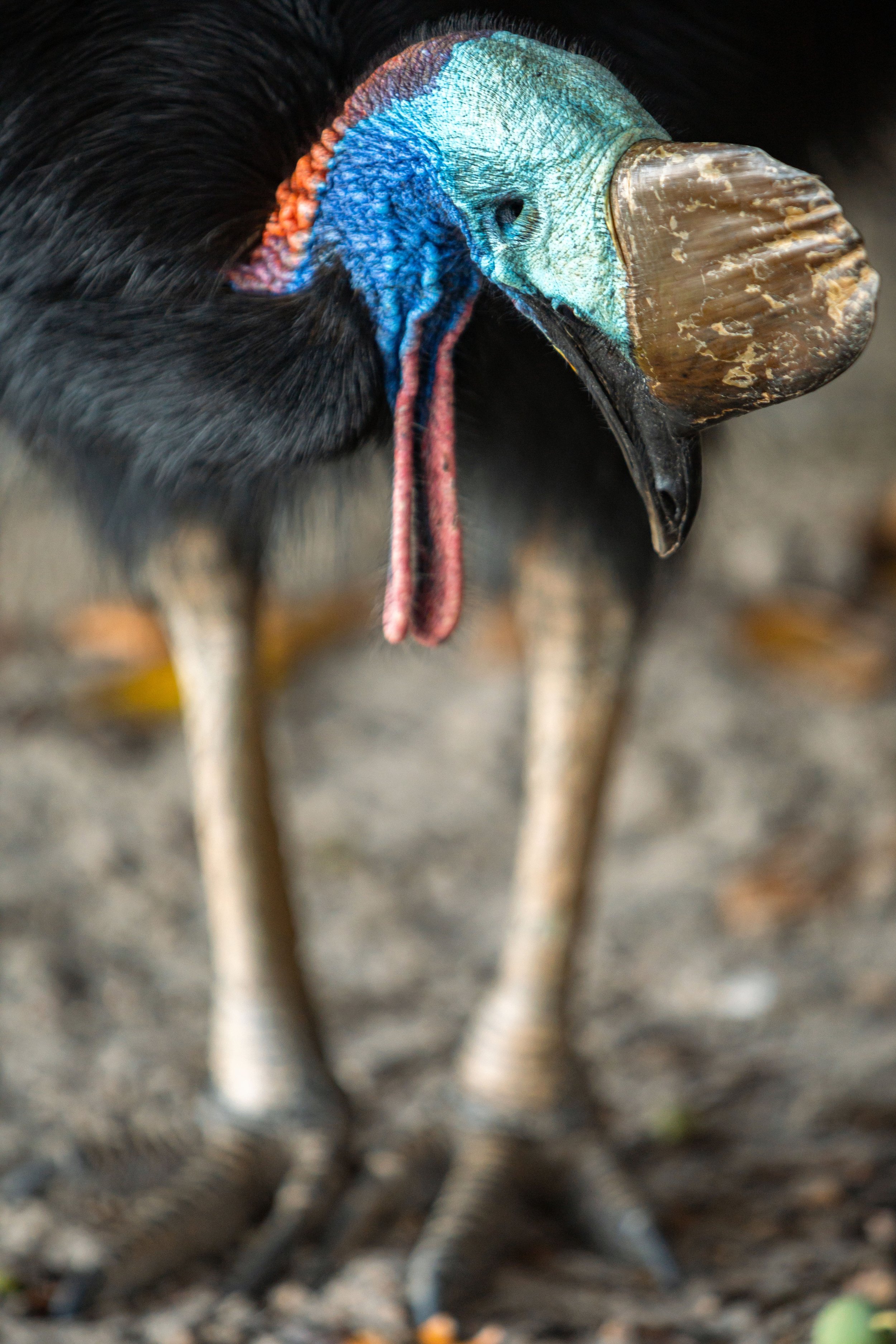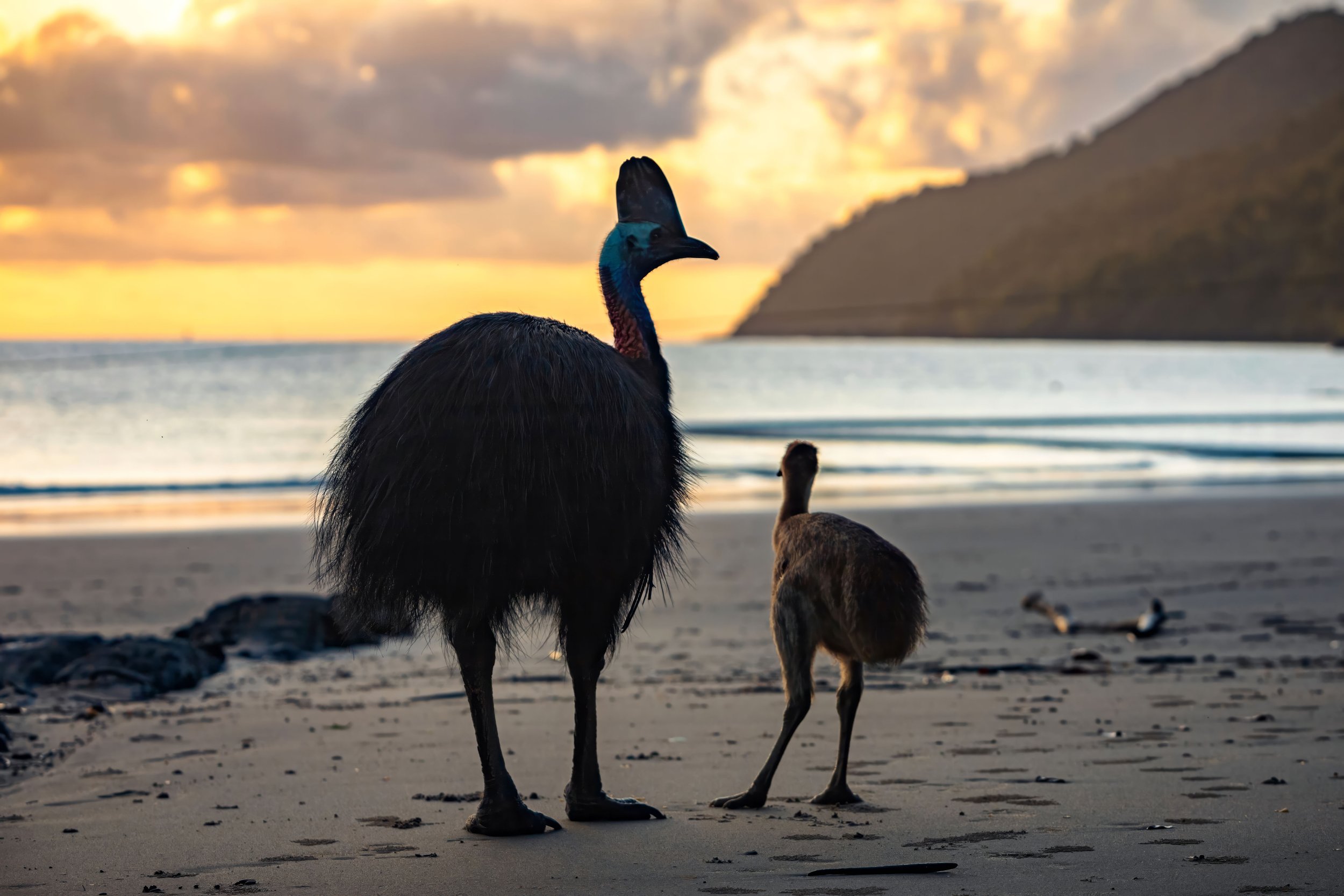CASSOWARY OF NORTH QUEENSLAND, ETTY BAY & CAPE TRIBULATION- DAINTREE FOREST, AUSTRALIA 2023
The Dinosaur Bird of Far North Queensland
The southern cassowary, often referred to as the "dinosaur bird" due to its prehistoric appearance, is one of the largest flightless birds on Earth. Found in North Queensland's tropical rainforests, such as the Daintree Forest and Etty Bay, this bird is vital to its ecosystem, especially in seed dispersal, as it consumes large quantities of fruits and spreads seeds through its droppings, helping to maintain forest biodiversity.
Cassowaries have distinctive features, including black feathers, powerful legs, and a blue neck with red wattles. One of their most notable characteristics is the helmet-like casque on their heads, which helps them navigate through dense vegetation. Their strong legs are equipped with sharp claws, particularly a dagger-like middle claw that can deliver dangerous kicks when the bird feels threatened.
Reproduction and Behavior:
Cassowaries are solitary animals except during mating season or when a male is raising chicks. The mating season typically begins in May and lasts until June. After mating, the female lays 3 to 5 large, pale-green eggs in a nest made of leaf litter. Interestingly, once the eggs are laid, the male takes full responsibility for incubation and chick-rearing. He incubates the eggs for about 50 days and then cares for the chicks for up to nine months. The chicks are brown with stripes and are highly vulnerable, depending on the father's protection during their early life.
Cassowaries are shy and elusive creatures by nature, but they can be aggressive if cornered or if they perceive a threat, especially when they are protecting their chicks. While primarily frugivorous, they occasionally eat fungi, insects, and small vertebrates. They have a very specific role in maintaining the rainforest's health, as their diet includes a wide variety of fruiting plants, some of which rely entirely on cassowaries for seed dispersal.
North Queensland and its Rainforest Habitats:
The cassowary's habitat in North Queensland is unique, centered around the tropical rainforests like the Daintree Forest, one of the oldest surviving rainforests on the planet, estimated to be over 180 million years old. The Daintree Forest is a lush, biodiversity hotspot, home to a variety of species that thrive in its warm, humid environment. Cassowaries are a key species here, their presence indicating the health of the ecosystem.
Etty Bay, a small coastal area in North Queensland, is another location where cassowaries are often spotted. Here, cassowaries can sometimes be seen venturing out onto the beach, making it one of the few places where these birds are found in close proximity to humans. However, due to habitat destruction, vehicle strikes, and interactions with humans, the cassowary population remains at risk, with only around 4,000 estimated to be left in the wild.
The declining numbers of cassowaries highlight the need for conservation efforts, particularly in protecting their remaining habitats and reducing human impact. Their survival is not only crucial for the species itself but also for the rainforest ecosystems they help sustain.




















